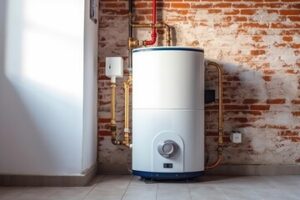Plumber Oceanside CA makes sure there is a steady supply of clean water and eliminate waste in our homes and cities. Without them, diseases such as cholera could spread freely.

They also play an important role in ensuring that building projects meet the necessary codes and regulations. If you’re considering a career as a plumber, it is essential to understand the plumbing licensing requirements in your state.
Plumbers install and repair pipes that carry water, waste, and gases to and from homes and businesses. They may also work on plumbing fixtures such as bathtubs, sinks, and toilets, or appliances like dishwashers and washing machines. Plumbers are typically required to have excellent manual dexterity to fit and remove parts, and they must be able to follow detailed blueprints to lay out pipe routes accurately. They use a variety of tools to perform their job, including augers, snakes, and hydro jets.
While most plumbers focus on installing new pipes and fixtures, some specialize in particular areas of the field. Residential plumbers, for example, work on plumbing systems in homes and apartments. These plumbers often deal with issues like clogged drains, toilets, and showers. They may also work on larger-scale plumbing projects, such as rerouting sewage lines or installing whole-house water filters.
Construction plumbers, on the other hand, are involved in new construction projects. These professionals collaborate with architects, engineers, and construction teams to ensure that the plumbing systems are installed according to specifications and building codes. They also inspect completed plumbing installations to make sure they meet standards.
Another area of specialization for plumbers is green plumbing. This practice involves using environmentally friendly materials and techniques to reduce a home or business’s energy costs and environmental impact. These plumbers may recommend and install fixtures such as low-flow toilets, water-saving faucets, and rainwater harvesting systems. They also provide guidance on how to maintain these plumbing systems to keep them functioning optimally. Many plumbers are members of labor unions, which negotiate their wages and benefits with employers. They may also be required to complete specific training to earn their certification.
Repair
A plumbing repair specialist will work to ensure that all of the pipes and fixtures in a home or commercial space continue to function properly. This includes everything from ensuring that water is distributed evenly throughout the house to repairing drain lines and sewer systems. Many of these repairs can be completed with simple tools, but some are more complex and require the help of a professional plumber.
One of the most common repairs plumbers make is fixing leaky pipes. These often occur in the kitchen, bathroom and other places throughout the house, and can cause serious damage if left untreated. Plumbers use specialized tools to quickly and effectively locate leaks and make the necessary repairs.
Another common plumbing repair involves clogged drains and sewer lines. These can be caused by a variety of factors, including food, paper products and other items being sent down the drains. Plumbers use a wide range of tools to clean and clear these drains, including hydro-jetting and hydro-steaming. These techniques are less invasive than traditional drain cleaning methods, such as plunging and snaking.
Most homes have a cleanout for their main sewer line, which is located in the lowest part of the house. Plumbers can usually access this easily, but may need to dig if the clog is farther down the line. In these cases, a plumber will use a camera to locate the clog and determine the best course of action.
Most homeowners also rely on their plumbers to handle water quality issues. This can include assessing the water temperature, quality and pressure, as well as addressing problems with their filtration system. Fortunately, most of these issues are preventable with regular maintenance and inspections.
Maintenance
Plumbing systems are complex and require regular maintenance to function properly. Plumbers can inspect components like drainpipes, water heaters and faucets to identify any potential issues before they become costly problems. They also use specialized tools to unclog pipes and fix damaged fixtures. Plumbers may also perform routine maintenance tasks like replacing washers and gaskets.
Plumbers work with both residential and commercial properties. For new construction projects, they can install piping and appliances according to blueprints and building codes. They also collaborate with other professionals like electricians to ensure that all aspects of a project are in accordance with regulations and standards.
Many people overlook the need for regular plumbing services until they experience a problem like a leaky faucet or clogged toilet. However, addressing these issues quickly can help prevent major damage and reduce repair costs. A professional plumber can diagnose and repair problems with ease, saving you time and money.
Leaking faucets, clogged toilets and water-wasting appliances are just a few of the problems that can arise from neglecting your home’s plumbing system. When these issues are left unattended, they can lead to expensive repairs and even structural damage. A qualified plumber can assess your home’s plumbing and recommend necessary repairs to keep it functioning at peak performance.
The plumbing industry requires a high level of physical stamina and dexterity, as well as an eye for detail. Plumbers often work with large pipes and must be comfortable working in tight spaces. They must also be able to recognize and identify issues with a range of materials, including metal, plastic and fiberglass. The work can also be dangerous, as plumbers often deal with human waste and contaminated water. This can expose them to bacteria and viruses such as cholera, typhoid, hepatitis, polio, cryptosporidiosis and schistosomiasis.
Education and Training
There are a number of ways to get formal training as a plumber. Some choose to enroll in a college program that offers a certificate or associate degree. Others join a union apprenticeship program, which typically lasts four or five years and provides classroom instruction as well as hands-on work experience in exchange for a paycheck.
Depending on the city or county where they will be licensed, plumbers may also need to complete continuing education courses in order to keep their license. These courses are designed to help them stay up-to-date on the latest industry practices and developments.
Many trade schools and community colleges in New York offer advanced plumbing courses that cover topics like green plumbing, plumbing codes, and other topics of interest to a plumber’s career. They can also provide certifications for specialized plumbing skills, such as pipe fitting, steam heating, and more.
The skills learned through these programs prepare graduates to become an apprentice and eventually a journeyman plumber. Upon graduation, they can apply for licensing at the city or county level in their area.
The training provided through a program prepares a plumber to work on plumbing systems for residential and commercial use. Coursework covers plan reading, piping techniques, kitchen and bathroom rough-in, water heater and boiler installation, and more. Students are given the opportunity to apply their skills on actual plumbing projects in the field, which helps them build the necessary confidence to tackle more challenging work as they progress in their careers. Many of these projects are in high-rise buildings and other difficult locations that require a high level of skill and attention to detail.
Licensing
When it comes to plumber services, you should always look for licensed professionals. Licensing requirements vary by state, but they generally involve years of apprenticeship and education followed by an exam. This way, you can be sure that the work is of a high standard and complies with local building regulations.
You can choose to become a plumber through a formal trade school or union apprenticeship program, take classes at a community college or vocational school, or gain on-the-job experience. Whichever route you choose, be sure to make the most of it. It’s important to get as much hands-on experience as possible, and you will likely learn more in the field than you would in a classroom setting. You should also make sure to ask plenty of questions and seek feedback from your supervisors. This will help you build a solid working knowledge of plumbing and prepare you for the certification process.
Plumbing is a highly technical occupation that requires attention to detail. As a plumber, you will be responsible for maintaining and repairing a range of systems in residential, commercial, and industrial settings. In addition to these duties, plumbers may be called on to provide advice and assistance on a variety of issues. This may include helping customers choose new fixtures or appliances, installing gas lines for heating and cooking, or resolving water leaks and other plumbing problems.
As a professional plumber, you should be prepared to answer questions about your background, training, and work experience. You may be asked to explain how you solved specific plumbing problems or discuss your approach to various tasks. You will also be required to have a valid license and insurance coverage in order to work on plumbing projects.

